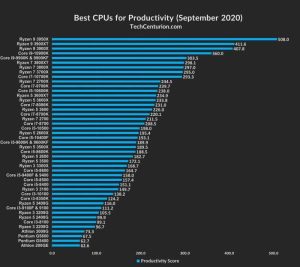
Step into the world of 5G networks where data communication reigns supreme, shaping the way we connect and interact in unprecedented ways. Get ready for a journey through the intricacies of this cutting-edge technology!
From the evolution of data communication to the key technologies driving 5G networks, this topic delves into the heart of modern connectivity.
Data Communication in 5G Networks
Data communication plays a vital role in the functionality of 5G networks, enabling the transfer of information between devices at high speeds and low latency. This ensures seamless connectivity and supports a wide range of applications, from IoT devices to virtual reality experiences.G networks differ from previous generations, such as 4G, in terms of data communication primarily due to their increased speed, capacity, and reliability.
The use of higher frequency bands, massive MIMO (Multiple Input Multiple Output) technology, and network slicing are some of the key features that set 5G apart and enhance data communication capabilities.
Key Technologies and Protocols in 5G Data Communication
- Massive MIMO: This technology allows multiple antennas to serve multiple users simultaneously, increasing network capacity and efficiency.
- Network Slicing: It enables the creation of multiple virtual networks within a single physical infrastructure, catering to diverse communication requirements.
- mmWave Technology: The use of millimeter wave frequencies enables faster data speeds and higher bandwidth, supporting data-intensive applications.
- Beamforming: This technique focuses the signal in a specific direction, improving signal strength and reliability for better data transmission.
Electronics and Electrical
The relationship between 5G networks and electronics/electrical components is crucial for the seamless operation and advancement of communication technologies. Electronics play a significant role in enabling the functionalities of 5G networks, while electrical infrastructure provides the necessary power and support for data transmission.Advancements in electronics have greatly influenced the development of 5G networks by enhancing the efficiency, speed, and capacity of communication systems.
Innovations in semiconductor technology, signal processing, and antenna design have led to the creation of high-speed and low-latency networks that are essential for the implementation of 5G technology.
Advancements in Electronics
- Integration of advanced semiconductor components such as mmWave technology for faster data transmission.
- Development of Massive MIMO (Multiple Input Multiple Output) systems for increased network capacity and spectral efficiency.
- Implementation of beamforming techniques for targeted and efficient signal transmission in 5G networks.
Importance of Electrical Infrastructure
- Powering the network components and ensuring uninterrupted operation of 5G network equipment.
- Supporting the deployment of small cell networks and base stations to enhance network coverage and capacity.
- Providing backup power solutions to maintain network connectivity during power outages or emergencies.
Computer Repair and Consulting

In the era of 5G networks, the landscape of computer repair and consulting services has been significantly impacted by the advancements in technology. Let’s explore how 5G technology has changed the way computer repair and consulting businesses operate, as well as the challenges and opportunities that have arisen as a result.
Impact of 5G Networks on Computer Repair and Consulting
With the introduction of 5G networks, the speed and reliability of internet connectivity have significantly improved. This has led to a higher demand for computer repair and consulting services, as more devices are connected to the internet and require maintenance and troubleshooting.
- Computer repair technicians now need to have a deeper understanding of 5G technology and how it impacts the performance of devices. This requires continuous learning and upskilling to keep up with the latest trends.
- Remote diagnostics and repairs have become more efficient with 5G networks, allowing technicians to troubleshoot issues without being physically present. This has increased the flexibility and convenience for both the service providers and customers.
- On the downside, the complexity of 5G networks can also pose challenges for computer repair and consulting businesses, as they need to invest in specialized tools and equipment to diagnose and fix issues related to high-speed connectivity.
Challenges and Opportunities in the Era of 5G Networks
The shift to 5G networks has presented both challenges and opportunities for computer repair and consulting businesses.
- Challenges:
- Increased complexity of network configurations and protocols, requiring technicians to undergo extensive training to keep up with the advancements.
- Security concerns related to 5G networks, as cyber threats become more sophisticated and pose a risk to sensitive data stored on devices.
- High initial investment in upgrading tools and equipment to support 5G technology, which can be a barrier for small repair businesses.
- Opportunities:
- Expansion of services to include 5G network optimization and troubleshooting, tapping into a new market segment with specific technical needs.
- Collaboration with network providers and device manufacturers to offer specialized repair services for 5G-enabled devices, creating new revenue streams.
- Remote assistance and support services leveraging the speed of 5G networks, offering quick solutions to customers without the need for onsite visits.
Computers E-Books
Data communication in 5G networks has brought about a significant transformation in the distribution and consumption of e-books. With the ultra-fast speeds and low latency offered by 5G technology, users can now download and access e-books almost instantly, making the process more convenient and efficient than ever before.
Role of Computers in E-Book Access
Computers play a crucial role in enabling seamless access to e-books through 5G networks. As powerful devices capable of handling large amounts of data, computers provide users with the platform to download, store, and read e-books with ease. With 5G connectivity, computers can quickly retrieve e-books from online libraries or platforms, allowing users to enjoy their favorite reads anytime, anywhere.
Future Trends of E-Books in 5G
Enhanced Interactive Features
With the advanced capabilities of 5G networks, future e-books are likely to incorporate more interactive features such as multimedia content, animations, and virtual reality experiences, providing readers with a more immersive and engaging reading experience.
Personalized Content Delivery
Using the high-speed connectivity of 5G, e-book platforms can deliver personalized recommendations based on user preferences and reading habits, ensuring that readers have access to content that aligns with their interests.
Increased Collaboration and Sharing
5G technology enables faster and more reliable sharing of e-books among users, fostering greater collaboration and knowledge-sharing within online communities. This trend is expected to grow as 5G networks become more widespread and accessible.
Graphics and Multimedia
The advent of 5G networks has revolutionized the way graphics and multimedia content is delivered and consumed. With faster data communication speeds and lower latency, 5G has significantly impacted the quality and delivery of graphics and multimedia content, leading to a more immersive user experience.
Impact on Quality and Delivery
- 5G networks enable higher resolution graphics and videos to be streamed seamlessly, resulting in crisper images and more detailed visuals.
- Real-time rendering and processing of multimedia content are now possible with 5G, allowing for more interactive and engaging user experiences.
- Virtual and augmented reality applications benefit greatly from 5G networks, offering users a more realistic and immersive experience.
- Enhanced video streaming capabilities, such as 4K and even 8K resolution, have become more accessible with 5G, providing users with unparalleled visual quality.
Enhanced User Experience
- Users can enjoy faster download and upload speeds, enabling quicker access to graphics and multimedia content without buffering or lag.
- Interactive multimedia applications, such as online gaming and video conferencing, run smoother and more efficiently on 5G networks, enhancing user engagement.
- Multi-tasking with graphics-intensive applications is now more seamless on 5G, allowing users to switch between apps and content without delays.
- Improved network reliability ensures a consistent and stable connection for uninterrupted streaming of graphics and multimedia content.
Challenges and Opportunities
- One challenge for graphics and multimedia industries is optimizing content for varying network speeds and devices to ensure a consistent user experience across different platforms.
- Opportunities arise for the development of innovative multimedia applications that leverage the capabilities of 5G networks to deliver cutting-edge experiences to users.
- Monetization strategies for graphics and multimedia content creators may evolve with 5G, offering new revenue streams through enhanced user engagement and interactivity.
- Ensuring data security and privacy becomes crucial with the increased connectivity and data transfer speeds of 5G networks, requiring robust protection measures for graphics and multimedia content.
Computers Hardware
In the realm of 5G networks, the hardware requirements play a crucial role in ensuring seamless data communication. Let’s delve into the specifics of what is needed to support the demands of this cutting-edge technology.
Hardware Requirements for 5G Networks
- High-performance Processors: The processing power required for handling the massive amounts of data in 5G networks is immense. Advanced processors with multiple cores and high clock speeds are essential.
- Increased Memory Capacity: To efficiently manage the data traffic in 5G networks, computers need ample RAM and storage capacity. This enables quick access to data and smooth operation.
- Enhanced Network Interface Cards (NICs): NICs with high data transfer rates are necessary to facilitate the rapid transmission of data in 5G networks. These cards help in maintaining the connectivity and speed of the network.
- Advanced Graphics Processing Units (GPUs): With the rise of applications like augmented reality (AR) and virtual reality (VR) in 5G networks, powerful GPUs are required to handle the complex graphics processing tasks.
Advancements in Computer Hardware for 5G
- Integration of AI and Machine Learning: As 5G networks continue to evolve, the incorporation of artificial intelligence (AI) and machine learning algorithms in computer hardware has become increasingly prevalent. This enables more efficient data processing and network management.
- Development of Specialized Accelerators: To meet the demands of 5G technology, specialized hardware accelerators have been designed to offload specific tasks such as encryption, decryption, and data compression. This helps in optimizing the performance of the network.
- Enhanced Cooling Systems: The heat generated by high-performance hardware components in 5G networks necessitates advanced cooling systems to prevent overheating and ensure the longevity of the hardware.
Future Possibilities of Computer Hardware in 5G Networks
- Quantum Computing Integration: The potential integration of quantum computing in 5G networks could revolutionize data processing and encryption capabilities, leading to unparalleled speed and security.
- Development of Neuromorphic Chips: Neuromorphic chips inspired by the human brain’s neural networks could provide a more efficient and adaptive approach to processing data in 5G networks, paving the way for cognitive computing.
- Advancements in Nanotechnology: The utilization of nanotechnology in computer hardware for 5G networks could lead to the creation of ultra-compact and energy-efficient devices, further enhancing the overall performance and sustainability of the network.
Ending Remarks

As we wrap up our exploration of data communication in 5G networks, remember that the future of connectivity is bright, filled with endless possibilities and innovations waiting to be discovered. Stay connected, stay curious!
Key Questions Answered
How does data communication in 5G networks differ from previous generations?
5G networks offer significantly faster speeds and lower latency compared to previous generations, enabling more efficient data transfer and enhanced connectivity.
What are the key technologies involved in data communication within 5G networks?
Some key technologies include Massive MIMO, beamforming, and network slicing, which work together to optimize data transmission in 5G networks.
How has 5G technology impacted computer repair and consulting businesses?
5G technology has opened up new opportunities for computer repair and consulting services, with faster speeds and improved connectivity leading to more efficient troubleshooting and remote assistance.




